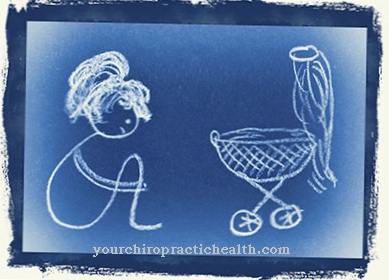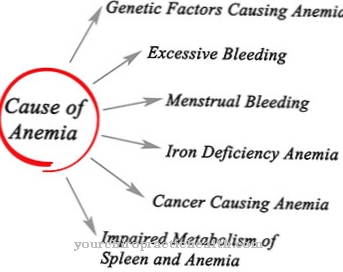In the progressive bulbar paralysis the motor cranial nerve nuclei of the trigeminal, facial, glossopharyngeal, vagus and hypoglossal nerves die. This loss leads to paralysis of the face and esophagus. ALS has similar symptoms, so that progressive bulbar paralysis is sometimes referred to as the ALS sub-form.
What is progressive bulbar palsy?

© Werner - stock.adobe.com
The progressive bulbar paralysis is a systemically progressive atrophy that is associated with tissue atrophy in the motor nerve nuclei. The tissue shrinkage has the medulla oblongata to the center and spreads from there. In addition to one form of the disease in adults, there is an infantile variant with a child's manifestation age.
Both forms of the disease are neurological diseases and primarily affect the motor neurons. The progressive bulbar paralysis is assigned to the spinal muscular atrophies, which are associated with a special distribution pattern. With the onset of the disease in childhood, the disease sometimes also becomes Fazio-Londe Syndrome called.
The progressive bulbar paralysis in adulthood is described by some sources as a special form of the degenerative disease ALS. If progressive bulbar palsy is associated with symptoms of deafness, it is also called Brown-Vialetto-van-Laere syndrome designated.
causes
The exact causes of the individual forms of progressive bulbar paralysis are so far unknown. In some cases, science was able to prove a mutation of the so-called Cu-Zn superoxide dismutase. This substance is an enzyme that carries out conversion processes in the body and catalyzes reactions with the product hydrogen peroxide.
The relationship to the degenerative disease ALS is suspected mainly due to the discovered mutation in the SOD gene, which codes for the enzyme described. This mutation can not only be demonstrated in many cases of progressive bulbar paralysis. According to recent research, the defects in the SOD gene can also be detected in people with the hereditary familial form of ALS.
The defect results in cytotoxic effects of the unstabilized SOD. The mutation supports a high tendency of the corresponding protein to accumulate, which is responsible for cell death. Only nuclear lesions of the cranial nerve nuclei cause bulbar paralysis. A supranuclear lesion, on the other hand, causes pseudobulbar paralysis.
Symptoms, ailments & signs
The progressive bulbar paralysis lets the tissue of the motor core areas go under step by step. Patients experience increasing difficulties with everyday and vital movements such as chewing, swallowing, or speaking. The gag reflex of most of those affected is significantly reduced within a very short time.
They can only move slightly in the facial area. In contrast to ALS, not all of the core motor area is affected by the degenerative changes. Instead, the disease focuses primarily on the cranial nerves V, VII, IX, X, and XII and the corticobulbar pathways of innervated muscles. The disease mainly affects the motor neurons in the core areas of the trigeminal nerve, facial nerve, glossopharyngeal nerve, vagus and hypoglossus.
Therefore, unlike patients with ALS, patients usually do not suffer from spastic or flaccid paralysis of the limbs. The lungs and heart are also not affected. Progressive bulb paralysis focuses symptomatically on the face, with the eye muscle nuclei preserved.
Diagnosis & course of disease
The diagnosis of progressive bulbar palsy is made using imaging techniques. The nuclear lesions in the corresponding core areas show up on MRI or CT. The disease must be differentiated from ALS by differential diagnosis. Because of the progressively increasing dysphagia, the prognosis for all forms of the disease is unfavorable.
A common complication is the aspiration of food or saliva, which often causes pneumonia and often leads to patient death within a year or three. In most cases, the disease progresses at a rapid rate. Rapid progression worsens the prognosis.
Complications
Progressive bulbar palsy has a very poor prognosis. Purely symptomatic treatment tries to reduce the risk of complications occurring. The main symptom of progressive bulbar paralysis is increasing dysphagia. Due to the obstruction of the swallowing process, the patient can no longer take in food and would starve to death without artificial nutrition.
In addition, there is always the risk of aspiration of food, which can lead to fatal complications. Aspiration is the inadvertent inhalation of food, liquids, or foreign objects, which then enter the bronchi. There they can lead to serious infections because the body is not able to remove the foreign bodies from the bronchi on its own. As a result of aspirations of food or saliva, severe pneumonia (inflammation of the lungs) often develops.
In infantile progressive bulbar paralysis, these complications often lead to death between the first and third year of life. In adulthood, progressive bulbar paralysis often occurs in the context of amyotrophic lateral sclerosis (ALS). Paralysis of the swallowing muscles is a particular complication of ALS and is responsible for the poor prognosis of this disease.
Progressive bulbar paralysis with deafness (Brown-Vialetto-van-Laere syndrome) has the best prognosis. In addition to rapidly progressing disease progression up to death, the progression can be halted at least temporarily in a third of patients.
When should you go to the doctor?
Restrictions in the act of swallowing, problems with the chewing process and visual abnormalities in the face and neck area must be presented to a doctor. If food intake is refused, if there is weight loss or an undersupply of the organism, the person concerned needs medical help. Disorders of the gag reflex or irregularities in breathing should be examined and treated.
A doctor must be consulted if the symptoms gradually increase over several weeks or months. In severe cases, food can no longer be consumed due to the impairments. This means that there is a life-threatening condition for the person affected. To enable an early diagnosis to be made, a doctor should be consulted as soon as the first signs appear.
If the person concerned swallowed repeatedly or if they fear suffocation, a doctor should be consulted. Hyperventilation, loss of muscle strength and symptoms of paralysis should be presented to a doctor as soon as possible. If the language changes, if the person concerned is withdrawing or if their performance drops, the person concerned needs help. Slurred speech or a refusal to speak in children should be viewed as warnings. If there is no change despite an understanding environment, a doctor is required. A doctor should be consulted in the event of a deficiency, internal dryness or problems with cleaning teeth.
Therapy & Treatment
Causal therapy is just as unavailable for patients with progressive bulbar paralysis as it is for patients with ALS. For this reason, treatment is purely symptomatic and consists primarily of aspiration prophylaxis and saliva reduction. Nutrition is carried out using probes in order to exclude the aspiration of food components.
Most patients suffer from hypersalivation. As the symptoms progress, they can no longer swallow the saliva and swallow it. The conservative therapy of these symptoms consists in the administration of anticholinergic drugs, such as amitriptyline or methionine. Alternatively, a botox injection can be given, which paralyzes the salivary glands.
Since many of those affected suffer from anxiety, the administration of fast-acting benzodiazepines is also an option as part of the therapy. Most of these drugs are given as drops because the patient can no longer swallow. One of the most important components of treatment is the psychological care of patients and their relatives.
Since those affected in the adult form must be fully aware of the progression of the disease, psychotherapy should enable the patient to cope with and better deal with the disease. The glutamate antagonist riluzole has been approved for delaying ALS since 1996. It is not clear whether this drug can also delay the progression of progressive bulbar palsy.
ALS is now also treated with stem cell therapy in the USA. This therapy is not approved in Germany. In addition, the effectiveness of the therapy in progressive bulbar paralysis is not considered confirmed.
You can find your medication here
➔ Medicines against muscle paralysisprevention
Progressive bulbar paralysis cannot be prevented at the moment, as the causes of the disease have not yet been conclusively clarified.
Aftercare
Progressive bulbar paralysis is currently an incurable disease, so follow-up care is very limited. The main aim here is to reduce the symptoms with the help of symptomatic follow-up care. Since the risk of progressive dysphagia (swallowing disorder) is high with this disease, it should be observed.
There is also a high risk of food inhalation and possible suffocation or inflammation of the airways. Here the patient is usually fed prophylactically using tubes. Furthermore, attempts are made to reduce hypersalivation, an increased production of saliva. This is usually done by administering drugs such as amitriptyline or methionine. Another alternative is botox injections into the salivary glands.
Psychological support is also important, as those affected often suffer from depression or anxiety. In some cases, additional medication is also necessary. After the disease with progressive bulbar palsy, regular examinations are advisable in order to monitor the progression of the disease and to adjust medication if necessary.
Progressive bulbar palsy has a poor prognosis. The rapid progression of the disease to death can only be delayed in a third of patients. There are already various therapeutic approaches, such as stem cell therapy, but they are still in the test phase.
You can do that yourself
The possibilities of self-help are very limited in progressive bulbar paralysis. The disease has an unfavorable prognosis and a difficult disease course. In everyday life, it is important that the patient works closely with the medical and nursing team. Immediately after the diagnosis, he should inform himself fully about the disease and its further development. The restructuring of everyday life and the organization of adequate supplies are vital. They should be done in a timely manner so that additional complications are avoided.
In order to be able to handle the adversities of the disease well, it is necessary that a mental strengthening takes place. In addition to the use of various relaxation methods and mental techniques, psychotherapeutic support is advisable. The joy of life and well-being are to be promoted. Dealing with the disease has to be learned. In addition, to prevent mental illness.
Exchanging ideas with other people affected can be helpful and beneficial. There is an opportunity to communicate with other sick people via self-help groups or in closed internet forums. Mutual help for self-help is lived there.
Since progressive bulbar paralysis is a heavy burden for relatives, they must also be fully informed about further developments in good time. Cohesion within a family is important for maintaining the patient's health and should be nurtured.



.jpg)
.jpg)
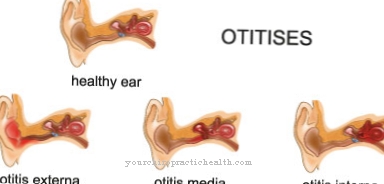




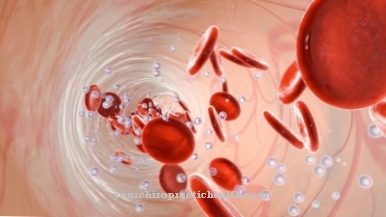


.jpg)
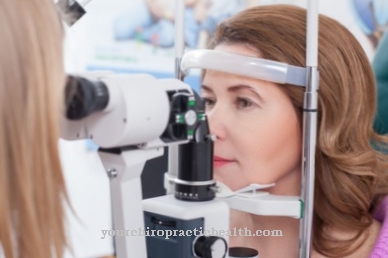










.jpg)
